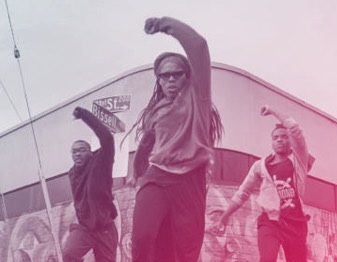Stacy Peralta’s new documentary may be about gangland L.A. in particular, but it matters here too. Not just because typically left-leaning Bay Area viewers pride themselves on the sort of humane (if sometimes under-critical) receptivity that is Peralta’s moviemaking m.o., but because, well, to live in a place where a cop just shot a black man in the back is to sit squarely within the Crips and Bloods target audience.
Having established his documentary career with presumably “safer” and more personally familiar young-male subcultures — of skating and surfing, respectively — in Dogtown and Z Boys and Riding Giants, Peralta has to get points here for bravery and ambition. The use of archival blood-in-the-streets footage in his propulsive, stylishly edited overture shows that he understands not only how elemental thug-life imagery is to our pop-culture vernacular but also how messed up that is; along with head-shaking wonderment, there’s the sense of how much more grim footage there is where this came from.
Maybe Made in America runs the risk of implying that the gang history of Los Angeles is the whole black history of Los Angeles. It’s not, of course, but the point of urgent inquiry is well taken: Just a few miles from Rodeo Drive, as the film makes arrestingly clear both verbally and visually, a perpetually smoldering civil war has been going on for decades and already has claimed some 15,000 American lives.
To figure out why, Peralta talks to gangbangers past and present, among other observers, and gathers several memorable if loosely-sketched portraits of men accustomed to wearing their sorrow, rage and resignation under necessary masks of hardness, if less accustomed to being listened to when asked about their lives.
There’s also a flamboyant take on the standard-issue filmstrip history lesson, demonstrating that the area has no shortage of socially oppressive circumstances, like the geographic segregation of unfair housing, systemic racist police brutality, sudden postwar de-industrialization and economic stagnation, the crack epidemic, and an unequivocally dysfunctional criminal justice system. (“That’s the new cotton field right there,” as one person puts it, “the pen.”) For the young men who were born into this hopelessness a generation ago, only to see prominent black leaders — not to mention their own fathers — slain, incarcerated or otherwise made absent, what other future could there be?


